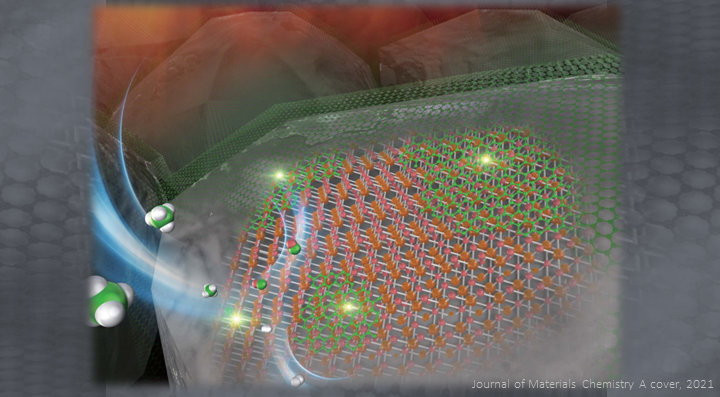Invitation to seminar (31.10.2022)

We cordially invite you to the lecture of our guest Professor Hirotomo Nishihara (Advanced Institute for Materials Research / Institute of Multidisciplinary Research for Advanced Materials, Tohoku University, Japan).
Date: 31. October 2022 at 13:00 h
Room: 107, IIC SAS
Title: Functional carbon materials: new synthesis approaches and analysis method
Abstract:
In this talk, recent four topics of my laboratory will be introduced regarding the development of functional carbon materials and advanced analysis methods.
The first topic is nanoporous materials with single-graphene walls, graphene mesosponges (GMS) [1]. There are many publications describing “graphene porous materials” and “three-dimensional (3D) graphene materials”. However, most of them are materials with stacked graphene walls or materials with macropores rather than micro/mesopores. By contrast, GMS possesses unique properties such as developed mesopores, oxidation resistance[2], high conductivity, and mechanical flexibility [3]. Thus, GMSis expected to have a variety of applications including supercapacitors [2], lithium-ion batteries, fuel cells [3], heat pumps [4], and catalyst supports.
The second topic is the synthesis of MOF-like ordered carbon materials called ordered carbonaceous frameworks (OCFs). Recently, carbonization of crystalline materials like metal-organic frameworks (MOFs) has been intensively investigated, whereas only amorphous carbons have been synthesized. We have discovered a way to synthesize ordered carbonaceous frameworks (OCFs) which retain the structure regularity as well as molecular blocks of the precursor organic crystal [5,6]. OCFs are the hybrid of crystalline materials like MOFs and carbon materials, and we are developing new catalysts with atomically defined active sites.
The third topic is the development of honeycomb monoliths with very small channel sizes (1 to 200 μm) called microhoneycombs. When a solid/water mixture with appropriate rheology is unidirectionally frozen at a constant rate, uniform-sized ice rods are grown pallarelly to the freezing direction, and subsequent freeze-drying yields microhoneycombs [7]. We have discovered a very strong structure-directing function of cellulose nanofibers, and it enables the inclusion of a variety of materials in the honeycomb walls [8].
The fourth topic is the development of new temperature-programmed desorption (TPD) technique up to 2300 °C with very high detection sensitivity. The advanced TPD enables the quantification of the number of graphene edge sites in any carbon materials including graphite and carbon nanotubes at a ppm level [2, 9]. We extend the advanced TPD to the analysis of N-doped carbons as a reliable qualitative and quantitative analysis method of N species at a ppm level.
References
[1] H. Nishihara, et al., Adv. Funct. Mater.,26, 6418-6427 (2016).
[2] K. Nomura, et al., Energy Environ. Sci., 12, 1542-1549 (2019).
[3] A. Ohma, et al., Electrochim. Acta, 370, 137705 (2021).
[4] K. Nomura, et al., Nat. Commun., 10, 2559 (2019).
[5] H. Nishihara, et al., Nat. Commun., 8, 109 (2017).
[6] T. Yoshii, et al.,Chem. Commun.,58, 3578 (2022).
[7] Z.-Z. Pan, et al., Bull. Chem. Soc. Jpn.,95, 611(2022).
[8] Z.-Z. Pan, et al., ACS Nano,10, 10689(2016).
[9] R. Tang, et al.,J. Mater. Chem.A,7, 7480(2019).
 Contact
Contact Intranet
Intranet SK
SK

